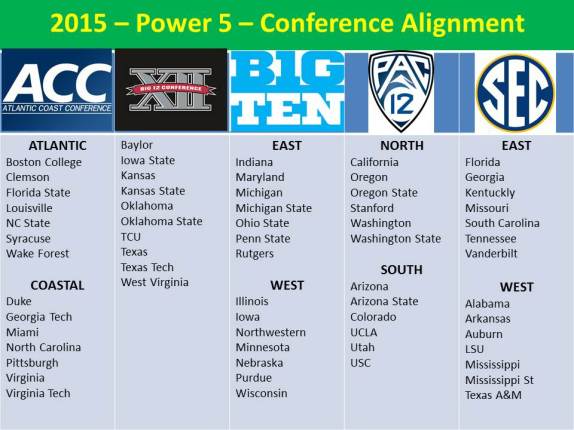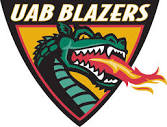SOD is hosting a Miami Hurricanes pre/post game show for MSL-Radio. In preparation for the season, I put together this Season Preview.
2015 Miami Hurricane’s Season Preview
There is a Hurricane Warning for Coral Gables, FL. Not one issued by the National Weather Service, but a warning issued by this sports reporter. Your warning? Be prepared for a surprise!
It is too early to tell whether this is a warning of a Good Surprise or a Bad Surprise; but, it is safe to say that the Miami Hurricanes are going to make a full-force, direct hit on Surprise. This team is tinkering on the brink of a break-out season or an all-out disaster resulting in the mandatory evacuation of the Coaching Staff.
The Hurricanes lost a lot of talent who will be playing football on Sundays this year from a team that finished with a less than stellar 6 – 7 record. That might be an ominous sign, but there appears to be enough “next-man-up” talent to steer this ship in the right direction. The problem with making an accurate forecast heading into the season is, there are just too many question marks that must be answered and answered quickly.
CONDITIONS FAVORABLE FOR A GOOD SURPRISE
The forecast for a good surprise starts with the man under center, Hurricane’s QB, Brad Kaaya. Last year, Brad received more A’s for his freshman year performance than he uses to spell his name. If the Hurricanes are going to enjoy a surprisingly good season this year, the young Kaaya must repeat, or even improve on, his award winning first year and completely avoid any sophomore slumping.
Of course, in 2015, there is no Duke Johnson to hand the ball off to; no blazing fast WR Phillip Dorsett or dependable TE Clive Walford to haul down passes; and, three fifths of the starting offensive line have left the building.
In replacing Johnson, the Canes HAD three potential answers, but Gus Edwards, it was recently announced, will now have to sit out the season due to an injury. So, that leaves it up to Joseph Yearby and Mark Walton to try to match Johnson’s productivity. Should this tandem realize some success at running back it should provide enough balance in the Hurricane offense to keep the opposing defenses honest and unable to simply key on Kaaya.
If the young and inexperienced front line provide enough time for Kaaya to throw the ball, there will be plenty of opportunity for Stacy Coley, Braxton Berrios, Herb Walters and/or Standish Dobard to make a name for themselves in the passing game.
The 2014 Hurricane Defense put up some impressive numbers, finishing ranked 14th nationally in total defense, but lapses against the better teams they faced suggest that they were not really all that good. Now, subtract Denzel Perryman, Anthony Chickillo and Olsen Pierre from the equation and you get the same thing you find everywhere else … question marks. But, the defensive backfield looks to be in capable hands with Deon Bush, Corn Elder and Artie Burns. If defensive ends Chad Thomas and Al-Quadin Muhammad and weak-side linebacker Jermaine Grace have break-out years the defense can help contribute to the pleasant surprise.
Another contributing factor to a positive forecast is the fact that Miami is not the only ACC team with a shipload of question marks. The Winston years are over at Florida State and the ACC seems ripe for a new king. A few bounces go the right way and this young Cane team avoids the penalties and mistakes that have plagued Al Golden’s teams the past few years and, who knows … this just might be the conditions favorable for a perfect storm that lands the Canes in the ACC Championship Game! It just might happen.
CONDITIONS FAVORABLE FOR A BAD SURPRISE
The forecast for a bad surprise focuses squarely on the trenches. If the offensive line and defensive front seven cannot whip into shape by the time the Canes host Nebraska in week 3, that game might mark the beginning of the end of the Al Golden era.
No matter how spectacular Kaaya is; no matter whether one or both running backs prove to be the second coming of Duke Johnson, if the offensive line cannot open up lanes and cannot give Kaaya 3 Mississippi’s to find his receivers, this could be a long and painful season in Coral Gables.
The Hurricanes open up the season with a cupcake and a pushover. The two games against Bethune-Cookman and FAU should be little more than tough scrimmages against jerseys of a different color. These games should allow the young Hurricanes to gain some experience, get some confidence and position this team to make a run at the ACC Coastal Title, but then the tests start for real.
The string of games between Nebraska, Cincinnati, FSU, Virginia Tech and Clemson will either make or break this Hurricane squad. If they come out of October in good shape – look for that Good Surprise storm to hit. If they hit bumps along the way, given the hot seat that the head coach is perched on, the wheels are likely to fall of the bus and the downhill slide might not be pretty.
CONCLUSIONS
So, where does this leave us? Well, your guess is as good as mine. The 2015 season is either going to be the season that we remember as the turning point for Al Golden and the Hurricanes or the season that leaves us searching for the next captain of our ship.
One thing is for sure however, whichever way it goes, it’s likely to be a surprise. You have been warned!



